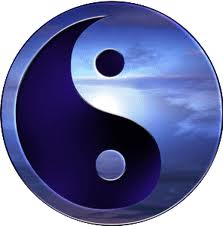 Traditional medicines -Chinese, Ayurveda & those of other less well known cultures- all hold that there are two opposing forces (or energies) in nature and that they need to be in balance for the harmonious functioning of all things. With regards to our bodies and this specific article I will use the concepts of Yin and Yang to describe this. For more information on this concept visit http://www.tcmbasics.com/basics_yinyang_theory.htm. Regardless of how one may catch a cold and whether it’s of a bacterial or viral nature, there are always a certain set of symptoms that are present and specific self-care measures one can take based on this in order to lessen the duration and severity of the cold. Ailments, from a Traditional Chinese Medicine (TCM) perspective arise as result of either a deficiency or an excess of Yin (cold and nutritive in nature) and/or Yang (hot and energizing in nature) in one or more of our body’s organ systems. In very general terms with a more yang presentation one will see fevers, great thrist, cough, a red tongue with possible yellow coating in a cold or flu. With a prominent yin presentation there will be sneezing, aversion to cold and blocked or runny nose.There are specific guildlines from a TCM perspective that can be followed once the nature of a cold is evident. I will however only mention a few basic ones for the purpose of this blog.
Traditional medicines -Chinese, Ayurveda & those of other less well known cultures- all hold that there are two opposing forces (or energies) in nature and that they need to be in balance for the harmonious functioning of all things. With regards to our bodies and this specific article I will use the concepts of Yin and Yang to describe this. For more information on this concept visit http://www.tcmbasics.com/basics_yinyang_theory.htm. Regardless of how one may catch a cold and whether it’s of a bacterial or viral nature, there are always a certain set of symptoms that are present and specific self-care measures one can take based on this in order to lessen the duration and severity of the cold. Ailments, from a Traditional Chinese Medicine (TCM) perspective arise as result of either a deficiency or an excess of Yin (cold and nutritive in nature) and/or Yang (hot and energizing in nature) in one or more of our body’s organ systems. In very general terms with a more yang presentation one will see fevers, great thrist, cough, a red tongue with possible yellow coating in a cold or flu. With a prominent yin presentation there will be sneezing, aversion to cold and blocked or runny nose.There are specific guildlines from a TCM perspective that can be followed once the nature of a cold is evident. I will however only mention a few basic ones for the purpose of this blog.
Other things to consider with regards to food preparation:
- Plants that take longer to grow (carrot, rutabaga, parsnip, cabbage, and ginseng, which takes at least six years to grow) are more warming that those that grow quickly (lettuce, summer squash, radish, cucumber).
- Raw food is more cooling than cooked food.
- Food eaten cold is more cooling.
- Cooking methods that involve more cooking time, higher temperature, greater pressure, and dryness, impart more warming qualities to food.
Although acupuncture has gained much fame with regards to it’s efficacy in the treatment of many musculo-skeletal conditions, pain management, anxiety/depression, as well as infertility, it’s usefulness in a simple cold however isn’t as well known. If you’re suffering from a cold and are looking for a quick and natural relief, I suggest you also consider acupuncture.
As always, use your own judgement in assessing the severity of your cold and flu and seek the advice of a proffessional when neccessary!
Take care.
P.S. If you haven’t already, it is now a good time to begin supplementing with Vitamin D -assuming you’re living in the upper hemisphere where your natural means of attaining Vitamin D are limited!
P.P.S. Sleep is yin and therefore nourishing in nature and can greatly help when fighting a cold. Make sure you neither oversleep nor deprive yourself of sleep.

[…] Medicinally, we all know the benefits of vegetables and this is a wonderful way to get a variety of vegetables for their full health benefits. Moreso, from a traditional chinese medicine perspective this is a very cool meal which is what our bodies need and crave in the heat of the summer! For more on the Yin/Yang and cooling/warming nature of foods see here. […]